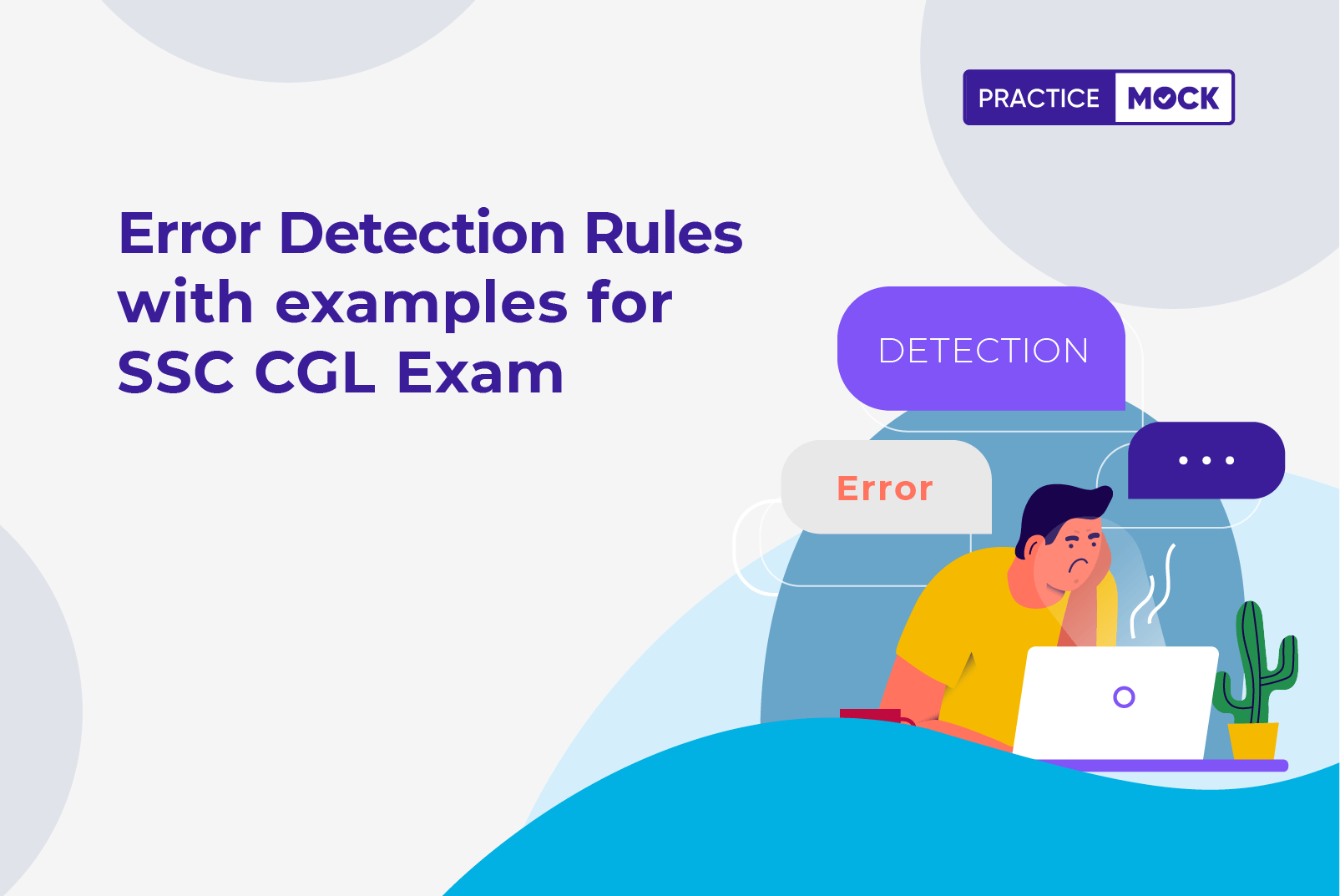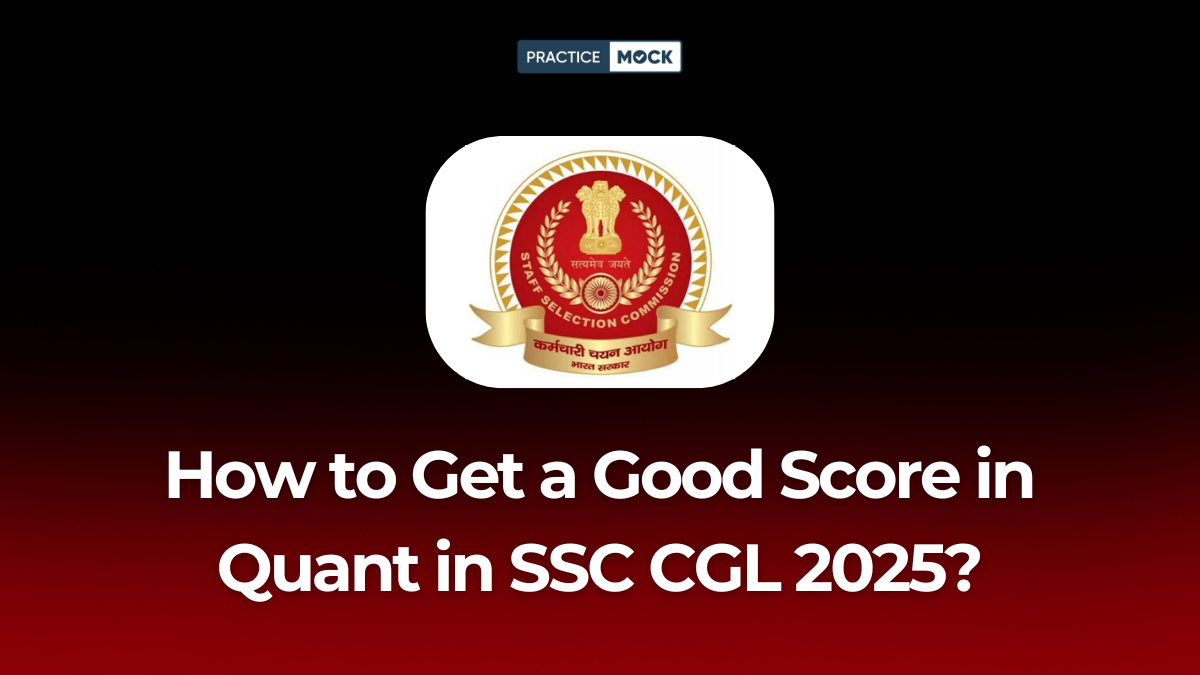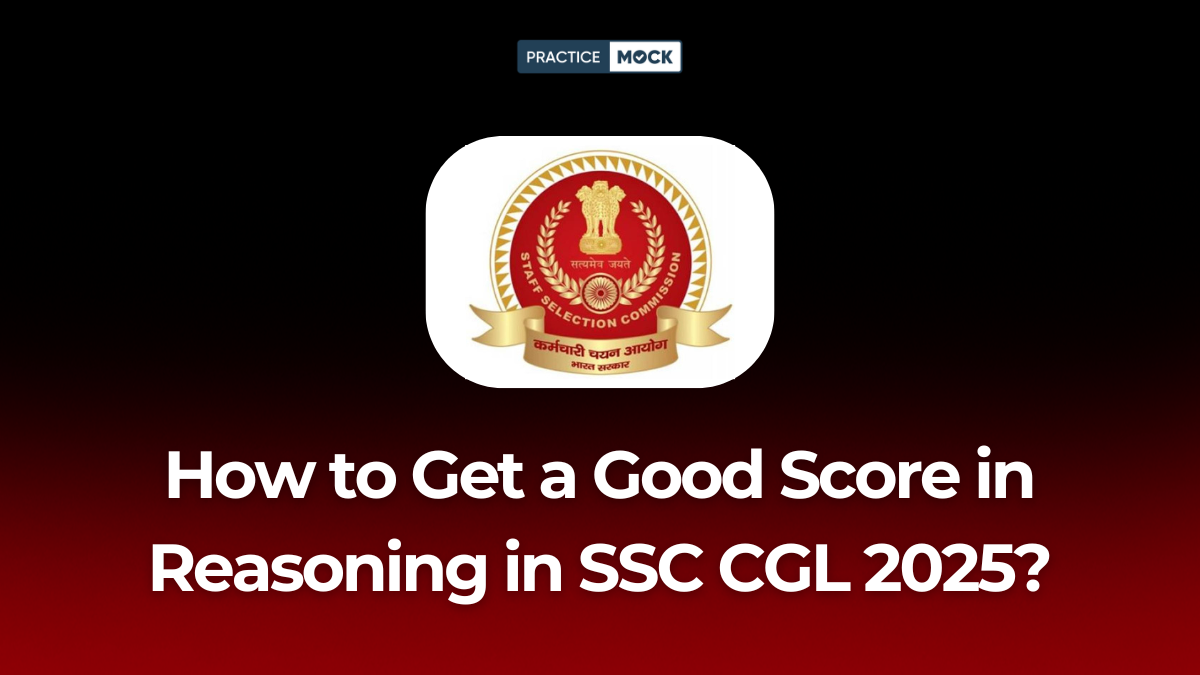Error Detection Rules with Examples for SSC CGL Exam, Get Free Resources


Error detection is a common topic in the English language section of the SSC CGL exam. It tests your ability to identify and correct grammatical errors in sentences. In this article, we will discuss some important rules and tips for error detection, along with some examples from previous SSC CGL papers. Solving the questions of the error detection for SSC CGL exam is important if you want to improve your score in the English section of the SSC CGL exam. Download the PDF of error detection questions and increase your level of preparation.
Error Detection for SSC CGL: Topic-Wise and Complete Preparation
Solving the topic test is very important if you want to get in-depth knowledge of the individual topic. Below, we have provided the topic tests for each section, including quizzes for current affairs, previous year question papers, and full-length mock tests.
| Click For Mock Test – > | SSC CGL Free Full-Length Mock Test |
| Click For SSC CA – > | SSC CGL Free Weekly Current Affairs Tests |
| Click For Quant – > | Quantitative Aptitude Free Topic Tests |
| Click For Reasoning – > | General Reasoning Free Topic Tests |
| Click For English – > | English Comprehension Free Topic Tests |
| Click For SSC GA – > | General Awareness Free Topic Tests |
| Click For PYQs – > | Free SSC CGL Previous Year Question Papers |
Questions of Error Detection for SSC CGL, Download Free PDF
Practicing the questions of error detection for SSC CGL exam can improve your performance for the SS CCGL exam. Here we have provided the questions of error detection for SSC CGL exam in a PDF that matches the level of the SSC CGL exam. You can download the PDF for free and solve the questions.
Rule 1: Subject-Verb Agreement
The subject and the verb of a sentence must agree in number and person. That is, a singular subject must take a singular verb, and a plural subject must take a plural verb. Similarly, a first person subject must take a first person verb, and so on.
Example: He go to school every day. (Incorrect)
He goes to school every day. (Correct)
Rule 2: Use of Articles
Articles are words that modify nouns. There are two types of articles: definite (the) and indefinite (a, an). The definite article is used to refer to a specific or known noun, while the indefinite article is used to refer to a general or unknown noun. Some nouns do not take any article.
Example: I saw a elephant in the zoo. (Incorrect)
I saw an elephant in the zoo. (Correct)
Rule 3: Use of Pronouns
Pronouns are words that replace nouns to avoid repetition. Pronouns must agree with their antecedents (the nouns they replace) in number, gender and case. There are different types of pronouns, such as personal, possessive, demonstrative, relative, interrogative, etc.
Example: She loves her mother very much and she respects her too. (Correct)
She loves her mother very much and he respects her too. (Incorrect)
Rule 4: Use of Prepositions
Prepositions are words that show the relationship between a noun or a pronoun and another word in the sentence. Prepositions can indicate time, place, direction, manner, purpose, etc. Some common prepositions are in, on, at, for, from, to, with, by, etc.
Example: He arrived on Monday morning. (Correct)
He arrived in Monday morning. (Incorrect)
Rule 5: Use of Conjunctions
Conjunctions are words that join two or more words, phrases or clauses. There are different types of conjunctions, such as coordinating, subordinating, correlative, etc. Conjunctions must be used correctly to avoid confusion or ambiguity.
Example: She is smart and hardworking. (Correct)
She is smart but hardworking. (Incorrect)
Error Detection Rules
Rule 6: Tense agreement
The tense of a verb must agree with the tense of the rest of the sentence. For example, the sentence “I went to the store yesterday” is correct because the verb “went” is in the past tense, which agrees with the tense of the rest of the sentence. The sentence “I go to the store yesterday” is incorrect because the verb “go” is in the present tense, which does not agree with the tense of the rest of the sentence.
Rule 7: Parallelism
Parallelism is the use of similar grammatical structures in a series of words or phrases. For example, the sentence “I like to eat, sleep, and play” is correct because the three actions (eat, sleep, and play) are all in the infinitive form. The sentence “I like to eat, sleep, and playing” is incorrect because the third action (playing) is in the gerund form, which does not parallel the other two actions.
Rule 8: Punctuation
Punctuation is used to mark the structure of a sentence and to clarify its meaning. For example, the sentence “I went to the store” is correct because it uses a period to mark the end of the sentence. The sentence “I went to the store?” is incorrect because it does not use a period to mark the end of the sentence.
Examples of Errors
Here are some examples of errors that can be found in text:
Subject-verb agreement:
The boys are playing. (Correct)
The boy is playing. (Correct)
Pronoun agreement:
The boys are playing and they are having fun. (Correct)
The boy is playing and he is having fun. (Correct)
Tense agreement:
I went to the store yesterday. (Correct)
I go to the store yesterday. (Incorrect)
Parallelism:
I like to eat, sleep, and play. (Correct)
I like to eat, sleep, and playing. (Incorrect)
Punctuation:
I went to the store. (Correct)
I went to the store? (Incorrect)
Tips for Error Detection
Here are some tips for error detection:
- Read the sentence carefully.
- Pay attention to the subject, verb, pronoun, tense, parallelism, and punctuation.
- If you find an error, try to correct it.
- If you are not sure whether a sentence is correct, ask someone else to help you.
Practice
The best way to improve your ability to detect errors is to practice. There are many resources available to help you practice, such as grammar books, online exercises, and practice tests.
More Error Detection Questions for Practice
Question 1: In the following question, one part of the sentence may have an error. Find out which part of the sentence has an error and select the appropriate option.
Hepburn said it made no sense (A)/ to use intermediaries to deal (B)/ with advertising agencies, instead (C)/ of speaking to them direct. (D)
A) A
B) B
C) C
D) D
Question 2: In the following question, one part of the sentence may have an error. Find out which part of the sentence has an error and select the appropriate option.
His mother came from a noble (A)/ family but he refused to used (B)/ a title of nobility in front of (C)/ his name as requested by his mother. (D)
A) A
B) B
C) C
D) D
Question 3: Choose the part of the sentence that contains the error.
To reach Crimea, (A)/ I had drove two hours south (B)/ from the Ukrainian city of Kherson (C)/ to one of the world’s tensest borders. (D)
A) A
B) B
C) C
D) D
Question 4: Find out error, if any:
Demand for cattle has been hamper (A)/ by the flood of cheap unlabelled foreign imports (B)/and generally the price has dipped. (C)/ No error (D)
A) A
B) B
C) C
D) D
Question 5: Find out error, if any:
It’s a slow process but it’s (A)/ time well spent to educate others and (B)/ provide tools on how to live harmonious. (C)/ No error (D)
A) A
B) B
C) C
D) D
Solutions
Solution 1: D)
In D, replace the adjective DIRECT with the adverb DIRECTLY as it is being used to modify the verb SPEAKING. Thus, (d) is the right answer.
Solution 2: B)
In B, replace the second form verb USED with USE as the TO + VERB infinitive construction will take the base form of the verb. Thus, (b) is the right answer.
Solution 3: B)
In B, replace the second form verb DROVE with DRIVEN as the past perfect tense construction HAD + VERB will take the past participle form of the verb. Thus, (b) is the right answer.
Solution 4: A)
In A, replace the base form verb HAMPER with HAMPERED as the passive voice construction HAS + BEEN + VERB will take the past participle form of the verb. Thus, (a) is the right answer.
Solution 5: C)
In C, replace the adjective HARMONIOUS with the adverb HARMONIOUSLY as it is being used to modify the verb LIVE. Thus, (c) is the right answer.
Conclusion
Error detection is an important skill that can be used to improve your writing and communication skills. By following the rules and tips in this article, you can improve your ability to detect errors in text.
Recent Posts
Wrong Number Series For IBPS PO 2025, Check Pattern of Questions
In this blog, we have given all the necessary information regarding the wrong number series…
SSC CGL Free Mock Test 2025: All Free Resources Are Here
This blog has provided SSC CGL Free Mock Test 2025 with free topic-wise tests, free…
How to Crack IBPS PO 2025 Exam With Practicemock Mock Test Series
Want to crack the IBPS PO 2025 exam? PracticeMock’s mock test series gives you real…
Simplification Questions for SBI PO 2025 Exam, Know Ways to Solve Quickly
Boost your SBI PO 2025 score with important Simplification questions. Learn smart tricks, shortcuts, and…
Dhanalakshmi Bank Recruitment 2025, Check Assistant Manager Syllabus and Salary
The Dhanlaxmi Bank Recruitment 2025 Notification has been released on their official website. Candidates can…
IBPS PO Exam Self-Preparation Tips: Crack the Exam with Confidence
Planning to prepare for IBPS PO 2025 without coaching? This guide offers self-study tips based…



